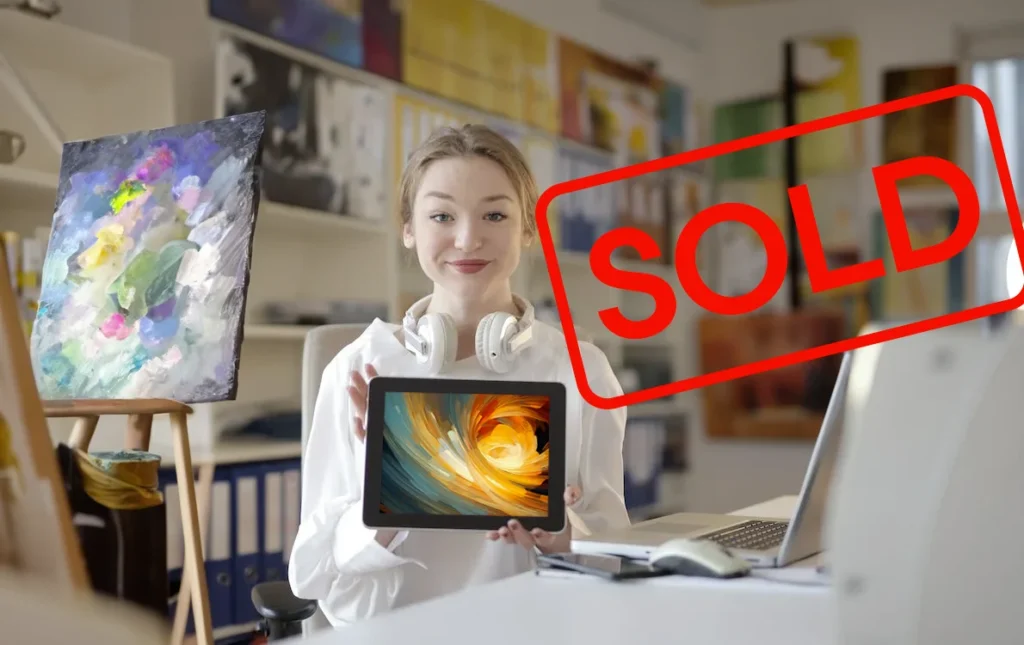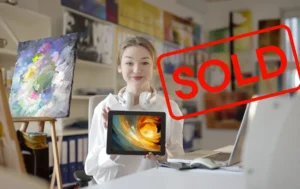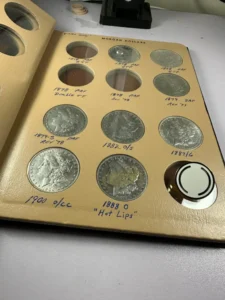The Prestige, The Power, The Platforms That Matter
Selling rare art used to mean white gloves, hushed rooms, and gatekeepers behind polished desks.
Now?
Some of the most valuable pieces in the world are being sold with nothing more than a password and a wi-fi connection.
The digital shift isn’t coming, it’s here. And it’s not a compromise. It’s an evolution.
Whether you’re sitting on a masterpiece, managing an exclusive portfolio, or creating one-of-a-kind pieces yourself, the internet’s become more than just a place to scroll. It’s where deals are made, reputations are built, and collectors from Tokyo to Toronto discover their next obsession.
But not every platform deserves your art.
Some are prestigious powerhouses. Others are loud, fast, and digital-first.
The magic happens when you match your art with the right platform.
Top 10 Digital Platforms for Selling Rare Art
1. Artsy
Where Museum-Grade Work Meets a Global Audience
Artsy doesn’t just sell art, it positions it.
Think of it as a digital extension of the world’s most respected galleries. With over 4,000 institutional partners, it gives artists and collectors access to top-tier buyers with serious intent.
Why it works:
Artsy combines elegant design with serious analytics, offering data-driven exposure to collectors who aren’t just browsing, they’re buying.
Access: Invite-only through partner galleries or vetted application
Fees: Monthly gallery subscription + commission on sales
Pros: Prestigious reputation, intelligent audience targeting, global reach
Cons: Not suitable for independent artists without gallery backing
Ideal For: Galleries and collectors with high-value, historically relevant works
2. Artnet
The Original Digital Auction House
Artnet was doing online art sales before it was cool.
Known for its precision, reliability, and market data depth, it’s a platform favored by institutions and high-net-worth collectors.
Why it stands out:
With a database of over 14 million auction results, Artnet empowers sellers with real-time valuation tools and serious transparency.
Access: Application required; review of work quality
Fees: Typically 15–20% commission on final sale
Pros: Auction format, data integrity, and serious buyers
Cons: Exclusivity can deter newer or lesser-known sellers
Ideal For: Sellers with mid- to high-value art and a track record
3. Saatchi Art
Global Reach for Independent Artists
Saatchi Art democratizes selling without diluting prestige.
It allows independent artists to list originals and limited editions while providing global logistics and customer service.
Why it thrives:
Saatchi handles the heavy lifting—shipping, payments, customer care—so you can focus on art, not admin.
Access: Open to all artists
Fees: 35% commission
Pros: Seamless user experience, international exposure, curated collections
Cons: Highly saturated marketplace
Ideal For: Artists and creators without gallery representation
4. 1stDibs
Luxury, Curated
If your artwork belongs in a penthouse or Parisian showroom, 1stDibs is the place.
Focused on luxury interiors and design, this platform blends high-end art with collectible decor.
Why it’s powerful:
Buyers on 1stDibs aren’t browsing, they’re acquiring. Each listing exudes class, and pricing matches.
Access: Invitation or application with strict curation
Fees: Annual subscription + commission per sale
Pros: High-value clientele, elevated brand association
Cons: Barrier to entry, monthly fees
Ideal For: Dealers and galleries with investment-grade or luxury artworks
5. Rarible
The Frontier of Digital Ownership
Rarible isn’t just a platform, it’s a movement.
This decentralized marketplace allows creators to mint, sell, and earn royalties on their digital works with complete control.
What sets it apart:
With blockchain backing, every sale and resale is transparent. Artists earn from every flip, forever.
Access: Open
Fees: 2.5% from both buyer and seller
Pros: Royalties baked into blockchain, fast setup, user autonomy
Cons: Requires crypto-savviness
Ideal For: Digital artists, NFT creators, crypto-native collectors
6. SuperRare
NFTs, But Make It High Art
SuperRare brings gallery-level curation to the NFT world.
Every piece is a single-edition token. Every artist is handpicked. And every sale comes with critical eyes watching.
Why collectors respect it:
SuperRare elevates NFTs to the realm of fine art by treating digital work with rigor and reverence.
Access: Application only
Fees: 15% on first sale, 10% on secondary
Pros: Top-tier community, resale royalties, cultural legitimacy
Cons: Hard to enter
Ideal For: Artists seeking prestige and longevity in digital art
7. OpenSea
The Largest Marketplace, The Wildest Potential
OpenSea is the wild west of NFT marketplaces.
Fast, open, and massive, it offers limitless possibilities and challenges alike.
Why it’s essential:
If you want to experiment, build a fanbase, or sell with minimal barriers, OpenSea delivers scale like no other.
Access: Open to everyone
Fees: 2.5% commission
Pros: Easy onboarding, huge traffic, cross-chain support
Cons: Crowded, inconsistent quality control
Ideal For: Emerging artists, limited runs, creators testing new ideas
8. Shopify + Art Storefronts / Printful
Control Your Brand, Control the Sale
Selling directly through your own website gives you total command of your brand narrative.
With Shopify and tools like Art Storefronts or Printful, you can turn your website into a bespoke gallery.
Why it works:
Direct sales mean direct profit, zero platform rules, and a relationship with your buyers that you own forever.
Access: Open
Fees: Starting $39/month + add-ons
Pros: Branding, control, scalability
Cons: Requires time, marketing, and tech know-how
Ideal For: Professional artists and galleries building independent sales channels
9. Instagram Shopping + DMs
Sell With Story and Style
Instagram isn’t just a visual diary; it’s a powerful sales engine.
Artists and sellers can build a following, showcase work, and sell directly through posts, stories, and messages.
What makes it effective:
Buyers see not just the art, but the artist. Personal storytelling often drives conversions faster than cold listings.
Access: Open
Fees: None (except optional ads)
Pros: Visual storytelling, direct fanbase, zero middlemen
Cons: Time-intensive, requires engagement
Ideal For: Creators with charisma, consistency, and a following
10. eBay
A Classic That Still Moves the Market
Yes, eBay.
While not glamorous, it remains a powerful platform for secondary market sales of rare art, signed editions, and collectible prints.
Why it remains relevant:
With built-in buyer trust, global visibility, and a proven auction model, eBay works, especially when you know your niche.
Access: Open
Fees: 12–15% depending on category
Pros: Wide exposure, auction or fixed-price options, trusted platform
Cons: Lower prestige, seller competition
Ideal For: Resellers, collectors liquidating inventory, artists familiar with pricing trends
The Platform You Choose Is Part of the Art
Your artwork may be rare, but its value isn’t just in the brushstroke or the byte; it’s in how you present it.
A digital platform isn’t just a marketplace; it’s a stage, a showroom, and a message.
Choose one that aligns with your identity, your audience, and your ambitions.
Sell smart. Sell beautifully. Sell where it matters.






